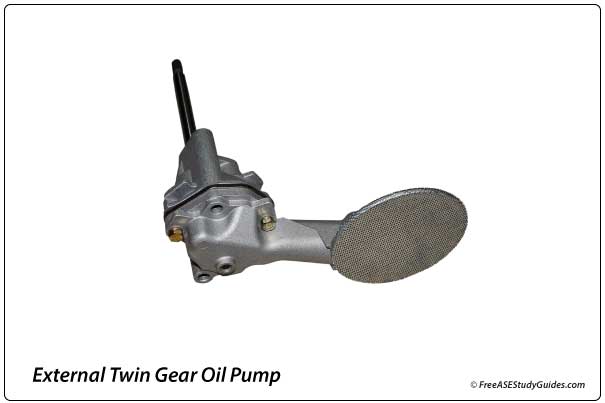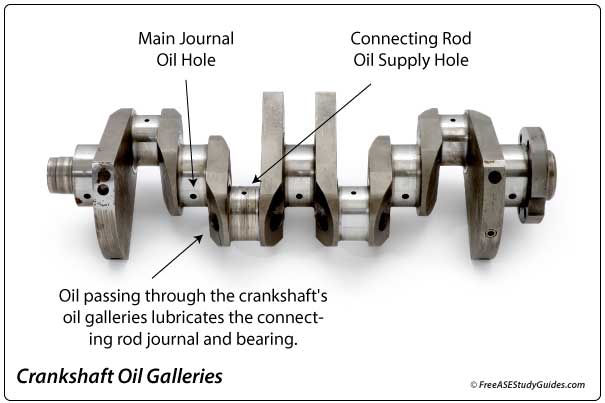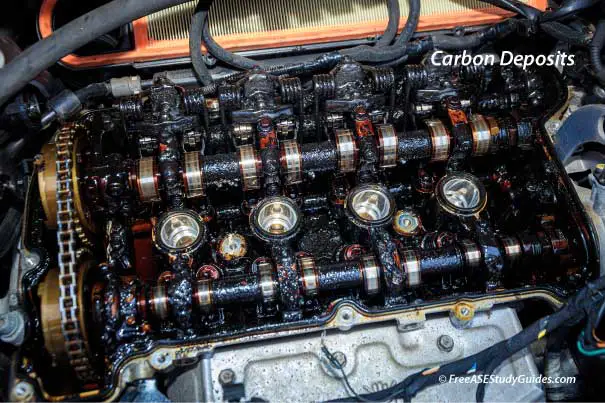The Engine's Lubrication System

At the heart of the engine's lubrication system is the oil pump. It creates the oil pressure to lubricate, clean, and cool the engine. The engine's valvetrain, bearings, and moving parts will fail without this oil.

The oil pump pickup screen filters large pieces, and the oil filter filters finer particles as small as 10-20 microns. The oil pump passes pressurized oil to the engine's oil galleries. The oil galleries are small holes drilled or cast into the engine block and heads that transfer the oil to the crankshaft, camshaft, and valve train.

The crankshaft rod bearings receive oil from the oil galleries in the crankshaft. They ride on a thin film (~.001") of oil supplied through the hole in the engine block that aligns with the upper crankshaft bearing. The crankshaft contains oil supply galleries/passages that transfer oil under pressure from a hole in the engine block through a hole in the main bearing to the connecting rod journals/bearings. Restricting the crankshaft oil passages leads to premature connecting rod bearing failure.

A film of oil protects valve train components from wear. The valve train will become noisy and soon fail without the necessary oil. Low oil pressure causes a ticking sound from metal-to-metal contact in the valve train.
Drain holes in the cylinder head and block provide a return path to the sump. A restriction in the oil drainage system leads to puddling and premature valve seal failure.